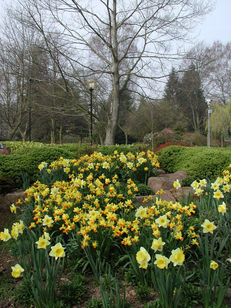Wildlife Gardening on Campus
Formal grounds will probably be the dominant green space on your campus. These areas will mostly be highly managed and may include neatly mown lawns, herbaceous borders and trees; tidily trimmed and pruned. But despite this intensive management, formal areas can offer a wide range of opportunities for wildlife to flourish.
The Royal Horticultural Society (RHS) recognises that biodiversity has an essential role to play in gardening from the maintenance of soil health and fertility, to the provision of natural pest control and pollination. Conservation and biodiversity has become a key focus of the RHS who have also formed partnerships with organisations such as The Wildlife Trusts to encourage and support biodiverse gardening.
It is now highly fashionable for gardens to look and feel more natural, incorporating organic principles and biodiversity features. Wildlife gardens have become a prominent feature of exhibitions such as the Chelsea Flower Show and the RHS Flower Show. A wide variety of organisations such as The Royal Society for the Protection of Birds (RSPB), The British Trust for Ornithology (BTO) and The Wildlife Trusts have become involved in these exhibits to demonstrate how the most attractive formal gardens can embrace biodiversity.
Gardening with Biodiversity in Mind
Management Methods
Planting Schemes
Case Study
Edge Hill University - Grass





 Except where otherwise stated, content on this site is
licensed under a Creative Commons Attribution 3.0 License.
Except where otherwise stated, content on this site is
licensed under a Creative Commons Attribution 3.0 License.
